The Philodendron Mican, with its velvety leaves and vibrant colors, is a popular choice among indoor gardeners. This guide will provide you with all the information you need to grow and care for your Philodendron Mican successfully.
Introduction
The Philodendron Mican is a member of the aroid plant family, which includes popular varieties like Monstera, Anthurium, and Alocasia. Native to the tropical regions of Central and South America, this plant is prized for its unique, heart-shaped leaves with a velvety texture. Similar to Aglaonema and Epipremnum, the Philodendron Mican is not only beautiful but also relatively easy to care for.
Overwatering
Overwatering is one of the most prevalent problems with Philodendron Micans. These tropical plants do not like wet feet. Too much moisture around the roots can lead to root rot.
Signs of Overwatering
- Yellowing, drooping leaves
- Brown, mushy roots
- Leaf drop
- Soft, mushy stems
How to Fix It
- Allow the soil to completely dry out between waterings. Check with your finger.
- Water less frequently. These plants only need water when the top few inches of soil are dry.
- Improve drainage by repotting in a soil mix containing perlite, bark, or sand.
- Cut away any rotten roots and allow the cut end to callous before replanting.

Underwatering
While overwatering is common, underwatering can also be an issue for Philodendron Micans. If the soil dries out too much, the plants can start to wilt.
Signs of Underwatering
- Drooping, wrinkled leaves
- Slow growth
- Brown leaf tips and edges
- Dry, shriveled stems
How to Fix It
- Water whenever the top few inches of soil feel dry. Stick your finger in to check.
- Increase humidity around the plant. Misting leaves or using a pebble tray can help.
- Water more slowly and deeply to encourage roots to grow downwards.
Low Humidity
Philodendron Micans thrive in humid conditions. Dry air can quickly impact their health and growth.
Signs of Low Humidity
- Dry, brown leaf tips and edges
- Crispy-looking leaves
- Slow growth
How to Increase Humidity
- Mist leaves frequently with a spray bottle
- Place plant on a pebble tray filled with water
- Use a humidifier near the plant
- Grow in a greenhouse or terrarium

“Discover the lush beauty of the Philodendron Mican – Click to bring this stunning plant into your home today!”
Sunburn
Too much direct sunlight can scorch the leaves of Philodendron Micans. Filtered light is best for these tropical plants.
Signs of Sunburn
- Yellow, brown spots on leaves
- Crispy, curled leaves
- Dry leaf tips and margins
How to Prevent It
- Move plant to a shaded location with bright, indirect light. East or west facing windows are ideal.
- Filter sunlight with a sheer curtain.
- Turn the plant periodically so no one side gets too much light.
Pests
Common houseplant pests like spider mites, mealybugs, and aphids can infest Philodendron Micans. These bugs suck sap and fluids from the leaves and stems.
Signs of Pests
- Sticky residue on leaves
- Specks of white cottony material
- Small insects crawling on the plant
- Yellow speckled leaves
- Curled or distorted leaves
How to Get Rid of Them
- Wipe leaves down with a damp cloth to remove any visible pests.
- Spray plant with insecticidal soap or neem oil.
- Apply sticky traps near plant to catch adult insects.
- Isolate infected plants away from healthy ones.

Cold Damage
If temps dip too low, cold damage can occur on these tropical plants. Leaf scorching and discoloration will develop.
Signs of Cold Damage
- Tan, brown spots on leaves
- Shriveled, curled leaves
- Drooping leaves and stems
- Slow, stunted growth
How to Prevent It
- Move plant away from cold windows and drafts.
- Maintain indoor temps above 60°F.
- Avoid placing plants outdoors if frost is possible.
- Provide heating sources like a space heater near the plant.
Philodendron species are the most sought after by aroid plant lovers
Conclusion
With the right care, most Philodendron Mican issues can be corrected. Be careful not to overwater, provide humid conditions, filter bright light, and keep temps warm. Address any pest problems promptly. Keep the plant in an ideal environment and it will flourish for many years to come.







![12x Monstera Borsigiana Albo half leaves variegata [3-4 leaves]](https://greenboog.com/wp-content/uploads/2024/10/Monstera-Borsigiana-Albo-half-leaves-variegata-1-500x500.jpg)



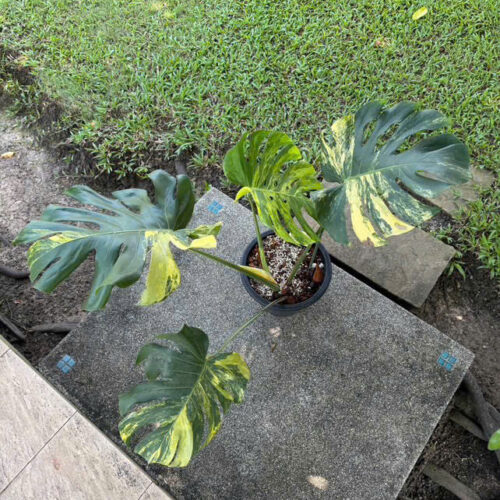



![10 Pots x Monstera Aurea Variegated / Mix Aurea tri color 3-4 leaves [well variegated]](https://greenboog.com/wp-content/uploads/2024/08/Monstera-Aurea-Tri-color-500x500.jpg)


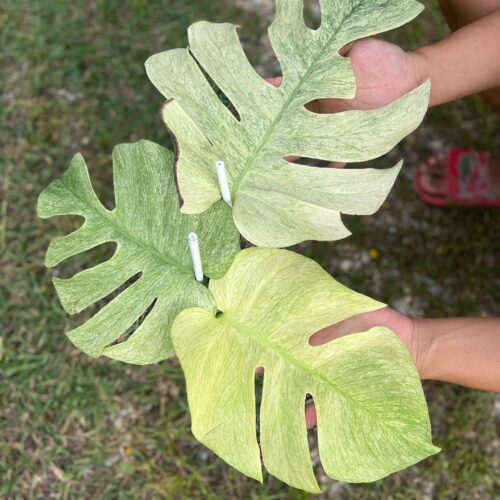

![[SALE] 10 Pots x Monstera Aurea Variegated 3-6 leaves [Medium size]](https://greenboog.com/wp-content/uploads/2025/01/Monstera-Aurea-variegated-4-6-leafs-500x482.jpg)

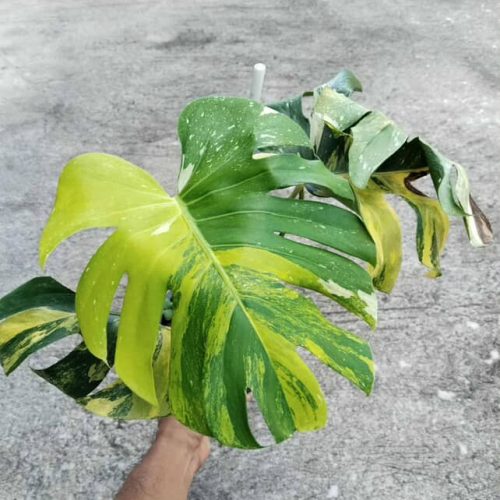







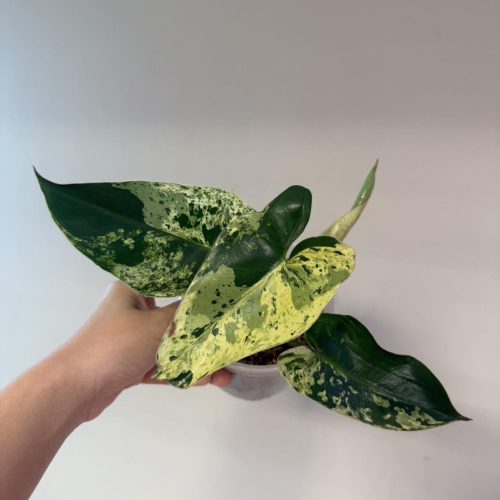









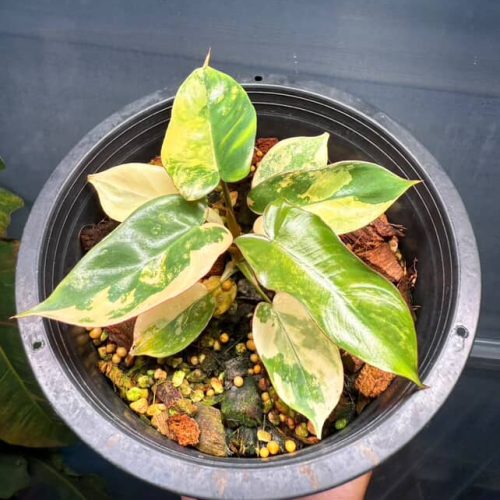


Hi there my philodendron micans has started to have pink leaves and they eventually fall off. Is this due to too much sun? I had it by the wall, climbing but the sun was indirect and in a west facing window. I did have a grow light right beside it so maybe that was the issue? I have moved it so that the grow light is now blocked so hopefully that works but what do you think?
It’s possible that the grow light was too intense for your Philodendron Micans and caused the pink leaves and leaf drop. While they enjoy bright, indirect light, they can be sensitive to excessive light, especially artificial light that’s too close.
Here’s why the grow light might be the culprit and what else to consider:
Light intensity: Grow lights often emit stronger light than a typical west-facing window, even if it seems indirect. This can stress the plant, leading to pink discoloration (similar to a sunburn) and eventual leaf drop.
Light duration: Was the grow light on for an extended period? Philodendron Micans, like most plants, need a period of darkness for optimal health. Too much light can disrupt their natural cycle.
Heat: Grow lights can generate heat, which can also contribute to leaf stress, especially if the light is very close to the plant.
What to do now:
Observe: Monitor your plant closely now that you’ve moved the grow light. New growth should be a healthy green. It might take a few weeks to see improvement.
Indirect light: Ensure the plant receives bright, indirect light. A west-facing window is generally good, but you might need to move it slightly further away if the sun is too intense.
Watering: Make sure the soil is well-draining and that you’re not overwatering. Allow the top inch or two of soil to dry out between waterings.
Humidity: Philodendron Micans prefer higher humidity. Consider a humidifier or a pebble tray to increase humidity around the plant.
If the problem persists:
Other causes: If moving the grow light doesn’t resolve the issue, consider other factors like temperature fluctuations, pests, or root problems.
Seek expert advice: If you’re still concerned, you can consult with a local plant shop or a gardening expert for a more personalized diagnosis and solutions.
It’s great that you’re taking steps to address the issue. With a little observation and adjustment, your Philodendron Micans should hopefully recover and thrive!